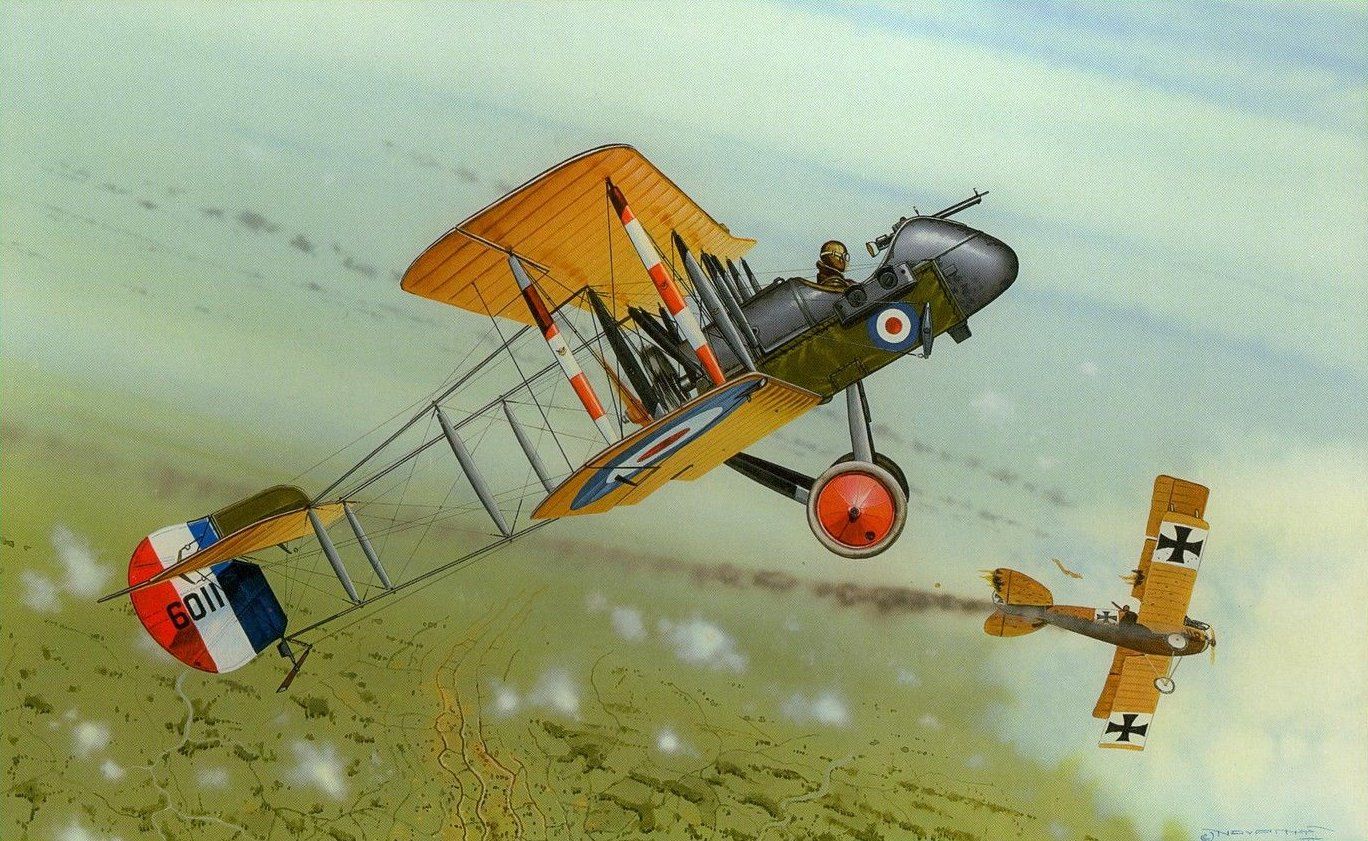In many ways, WW1 shaped early flying machines into the recognizable shapes we see today.
As well as being a time of terrible conflict, the Great War was also a time for progress in aviation. Whilst trying to gain the upper hand on the enemy during the stalemate of the Western Front, advancements in technology made for some stunning discoveries. Aircraft evolved from tiny reconnaissance spotter planes to huge bombers in just four years between 1914 and 1918. Here are five advances that made this possible.
1. Synchronization Gear
This device really made all the difference when it came to dogfighting. Aviation was really only used in a reconnaissance role up until the Battle of Verdun in 1916. At this point, the Germans had a distinct advantage: their planes were able to fire their guns forwards. This was thanks to a special piece of tech known as the synchronization gear which, for all intents and purposes, interrupted the guns so a pilot could fire without striking his own propeller.

Later in the conflict, both sides could fire through their propellers.
2. Parachutes
Parachutes had been around for longer than the airplane. Ever heard of Franz Reichelt? Unfortunately, despite them being available, many of those in command of the air forces of WW1 decided pilots should not be issued with parachutes. This was because there was concern that pilots would not fight as hard and may even bail out of their planes to avoid going into combat.

Tragically, this sentiment led to the loss of almost all shot down pilots when a significant percentage of them could have been saved. It's worth considering that a pilot's last resort is to jump out of their aircraft as it is, indeed, a rather scary prospect. It's also worth considering that the commanders who made these decisions, condemning thousands, never actually flew let alone participated in aerial battles.

3. General Aircraft Design
Throughout the Great War, innovation in aircraft design was a battle in its own right waged between enemy designers. There were all sorts of configurations tested, each with their own distinctive advantages. Mono, bi and triplanes were used by both the air forces of the Central Powers and Tripple Entente.

The Armstrong Whitworth F.K.10 Quadruplane.
Some early aircraft were very basic. Shockingly, they sometimes lacked devices that we would expect to be absolutely essential for an aircraft today. The Airco DH.2, for example, didn't actually have a throttle as such. I know - crazy! You could lower or raise the RPMs through the fuel mixture, yet most of the time a pilot would have to essentially turn the engine on and off to vary the thrust.

The DH.2 had no workable throttle.
4. Gun and Bombsights
At first, gunsights were very rudimentary and there were no such things as bombsights. The pilot and bomb aimer relied on the eye to judge a drop. In the very early days, sometimes a pilot would simply drop bombs and grenades from the cockpit by hand! Later, sights that would look very similar to those in WW2 were used to more accurately hit targets such as bridges, factories and trenches from the air.

A crewmember eyes a target before dropping a bomb.
5. Radio Communication
An almost inconceivable idea to modern pilots today, early WW1 pilots had no direct way of communicating with the ground whilst in the air. Flairs were sometimes used as well as messages in bottles dropped overboard on enemy forces. As it was useful for aircraft to direct bombardments of enemy forces, it was necessary to develop transmitters that allowed aircraft to communicate directly through radio. This was usually a one-way conversation, however, as aircraft were not often fitted with receivers.

Homing Pigeons being loaded into a German plane for communication with the ground.
Build your own WW1 Planes!
Luckily for you if you enjoy learning about WW1 aviation, you can build your own RC versions of some of the famous Great War aircraft with our Flite Test kits. As well as our FT SE5 and FT DR1, you can get a Battle Buddies set which includes both. Get building and show us some pics by posting on the Forum!

Links to further reading
Here's What Climbing Aboard Concorde is Like
The Flying Boats of the Golden Age
Article by James Whomsley
Editor of FliteTest.com
Contact: james@flitetest.com
YouTube Channel: www.youtube.com/projectairaviation







Log In to reply
- James.
Log In to reply